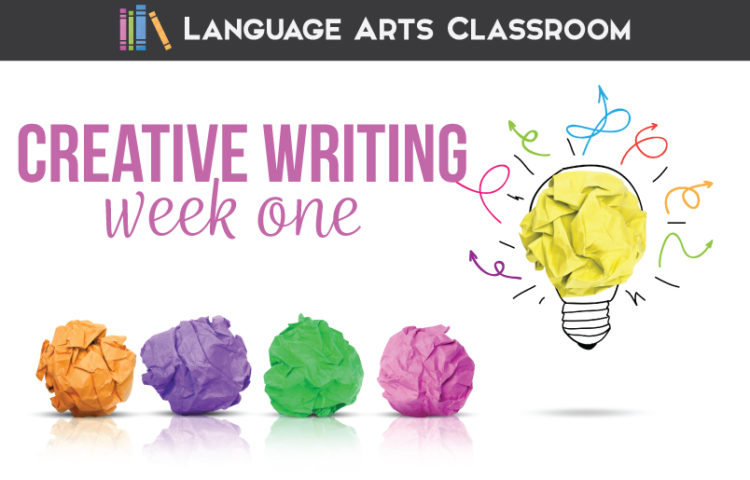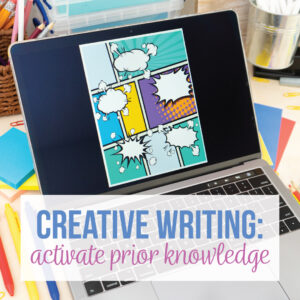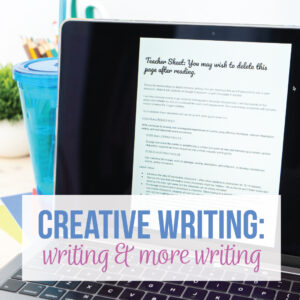Looking for creative writing lesson plans? I am developing creative writing lesson ideas!
I’ve written and revamped my creative writing lesson plans and learned that the first week is vital in establishing a community of writers, in outlining expectations, and in working with a new class.
What are some good creative writing exercises?
Some good creative writing exercises include writing prompts, free writing, character development exercises, and fun writing games.
The first week, though, we establish trust—and then we begin powerful creative writing exercises to engage young writers and our community.
How can add encouragement in creative writing lesson plans?
I’ve found students are shy about writing creatively, about sharing pieces of themselves. A large part of the first week of class is setting the atmosphere, of showing everyone they are free to create. And! These concepts will apply to most writing lesson plans for secondary students.
Feel free to give me feedback and borrow all that you need! Below, find my detailed my day-by-day progression for creative writing lesson plans for week one.
Creative Writing Lesson Day One: Sharing my vision
Comfort matters for young writers. I’m not a huge “ice breaker” type of teacher—I build relationships slowly. Still, to get student writing, we must establish that everyone is safe to explore, to write, to error.
Here are some ideas.
Tone and attitude
For day one with any lesson plan for creative writing, I think it is important to set the tone, to immediately establish what I want from my creative writing students. And that is…
them not to write for me, but for them. I don’t want them writing what they think I want them to write.
Does that make sense? Limitations hurt young writers. My overall tone and attitude toward young writers is that we will work together, create and write together, provide feedback, and invest in ourselves. Older kiddos think that they must provide teachers with the “correct” writing. In such a course, restrictions and boundaries largely go out the window.
Plus, I specifically outline what I believe they can produce in a presentation to set people at ease.
Powerpoint
The presentation covers expectations for the class. As the teacher, I am a sort of writing coach with ideas that will not work for everyone. Writers should explore different methods and realize what works for them. First, not everyone will appreciate every type of writing—which is fine. But as a writing community, we must accept that we may not be the target audience for every piece of work.
Therefore, respect is a large component of the class. Be sure to outline what interactions you find acceptable within your classroom community.
Next, as their writing coach, I plan to provide ideas and tools for use. Their job is to decide what tools work for their creative endeavors. My overall message is uplifting and encouraging.
Finally, when we finish, I share the presentation with students so they can consult it throughout the semester. The presentation works nicely for meet-the-teacher night, too!
Video
After covering classroom procedures and rules, I show students a TED Talk. We watch The Danger of a Single Story by Chimamanda Adichie. My goal is to show students that I don’t have a predetermined idea concerning what they should write. This discussion takes the rest of the class period.
Establishing comfort and excitement precedents my other creative writing activities. Personalize your “vision” activities for your lessons in creative writing. Honestly, doing this pre-work builds relationships with students and creates a positive classroom atmosphere.
Creative Writing Lesson Day Two: Activating prior knowledge
Students possess prior knowledge concerning creative writing, but they might not consider that. Students should realize that they know what constitutes a great story. They might not realize that yet. An easy lesson plan for creative writing that will pay off later is to activate prior knowledge. Brainstorm creative, memorable, unforgettable stories with students. Share your thoughts too! You will start to build relationships with students who share the same tastes as you (and those that are completely different!).
Activation activity
During this activity, I want to see how students work together, and I want to build a rapport with students. Additionally, activating prior knowledge provides a smooth transition into other creative writing activities.
This creative writing activity is simple:
I ask students to tell me memorable stories—books, play, tv shows, movies—and I write them on the board. I add and veto as appropriate. Normally doing these classroom discussions, we dive deeper into comedies and creative nonfiction. Sometimes as we work, I ask students to research certain stories and definitions. I normally take a picture of our work so that I can build creative writing lessons from students’ interests.
This takes longer than you might think, but I like that aspect. This information can help me shape my future lessons.
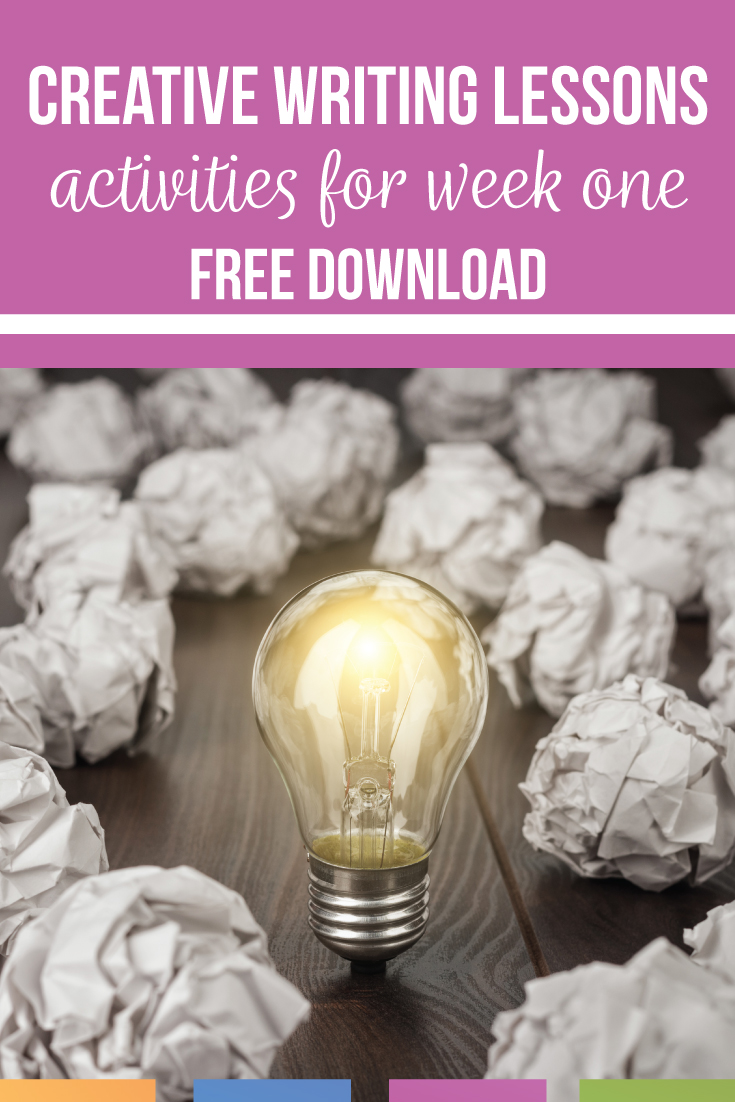
With about twenty minutes left in class, I ask students to form small groups. I want them to derive what makes these stories memorable. Since students complete group and partner activities in this class, I also watch and see how they interact.
Students often draw conclusions about what makes a story memorable:
- Realistic or true-to-life characters.
- Meaningful themes.
- Funny or sad events.
All of this information will be used later as students work on their own writing. Many times, my creative writing lessons overlap, especially concerning the feedback from young writers.
Creative Writing Lesson Day Three: Brainstorming and a graphic organizer
From building creative writing activities and implementing them, I now realize that students think they will sit and write. Ta-da! After all, this isn’t academic writing. Coaching creative writing students is part of the process.
Young writers must accept that a first draft is simply that, a first draft. Building a project requires thought and mistakes. (Any writing endeavor does, really.) Students hear ‘creative writing’ and they think… easy. Therefore, a first week lesson plan for creative writing should touch on what creativity is.
Really, creativity is everywhere. We complete a graphic organizer titled, “Where is Creativity?” Students brainstorm familiar areas that they may not realize have such pieces.
The ideas they compile stir all sorts of conversations:
- Sports
- Restaurants
- Movie theaters
- Amusement parks
By completing this graphic organizer, we discuss how creativity surrounds us, how we can incorporate different pieces in our writing, and how different areas influence our processes.
Creative Writing Lesson, Days Four and Five: Creative Nonfiction
Students need practice writing, and they need to understand that they will not use every word they write. Cutting out lines is painful for them! Often, a lesson plan for creative writing involves providing time for meaningful writing.
For two days, we study and discuss creative nonfiction. Students start by reading an overview of creative nonfiction. (If you need mentor texts, that website has some as well.) When I have books available, I show the class examples of creative nonfiction.
We then continue through elements of a narrative. Classes are sometimes surprised that a narrative can be nonfiction.
The narrative writing is our first large project. As we continue, students are responsible for smaller projects as well. This keeps them writing most days.
Overall, my students and I work together during the first week of any creative writing class. I encourage them to write, and I cheer on their progress. My message to classes is that their writing has value, and an audience exists for their creations.
And that is my week one! The quick recap:
Week One Creative Writing Lesson Plans
Monday: Rules, procedures, TED Talk, discussion.
Tuesday: Prior knowledge—brainstorm the modeling of memorable stories. Draw conclusions about storytelling with anchor charts. Build community through common knowledge.
Wednesday: Graphic organizer.
Thursday and Friday: Creative nonfiction. Start narrative writing.
Students do well with this small assignment for the second week, and then we move to longer creative writing assignments. When classesexperience success with their first assignment, you can start constructive editing and revising with them as the class continues.
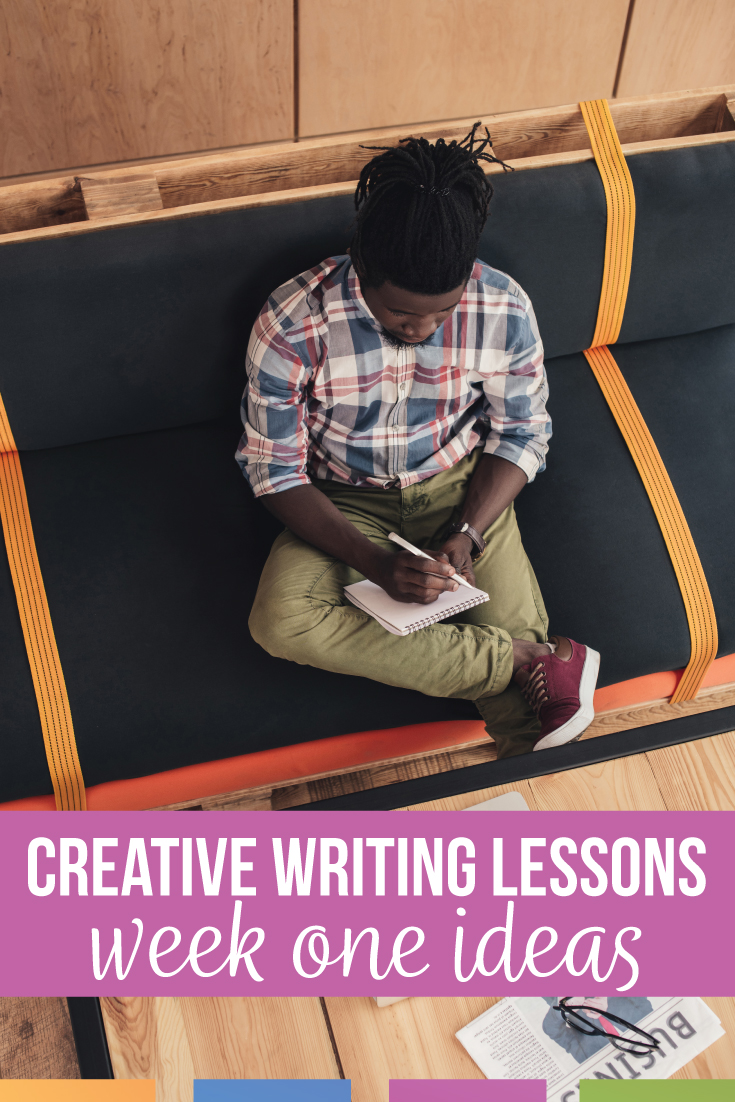
These creative writing activities should be easy implement and personalize for your students.
Are you interested in more creative writing lesson ideas? My Facebook page has interactive educators who love to discuss creative writing for middle school and high school creative writing lesson plans. Join us!

